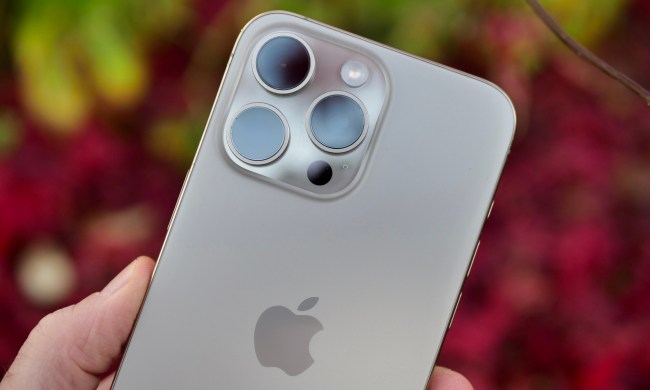
The federal government approved yet another multi-billion-dollar merger, bringing together the third-and fourth- largest U.S. wireless carriers — Sprint and T-Mobile — into one, while spawning a much smaller fourth contender: Dish Network.
The merge, five years in the making, recently gained approval from the U.S. Justice Department, as well as the FCC, removing two of the largest roadblocks to this telecommunications union.
Sprint and T-Mobile’s case for such a merger has long focused on two primary aspects: the company’s inability to compete with the larger two U.S. carriers, Verizon and AT&T, and the new company’s ability to bring 5G to more places faster – particularly rural areas. While some market experts agree with the former, the latter is a bit more complex.
“I think it’s a necessity from a business perspective of each of these two companies, and probably with regard to the promotion of the national economy that these two companies merge, because if they remain separate, they’re not going to be able to aggressively move into the 5G space,” C. Kerry Fields, professor of business law and ethics at Marshall School of Business at The University of Southern California, told Digital Trends. “I have some concerns over it, but there’s really no alternative. If they remain separate, they’re not going to be able to aggressively move into the 5G space.”
Those concerns shouldn’t be taken lightly. Government officials, politicians, and consumer advocacy groups have expressed worries the merger will bring rising costs for consumers and a detrimental lack of competition in the market. An antitrust lawsuit leveled by 13 states was filed in June as an attempt to block the merger for these very reasons. The participating attorneys general have remained ardent in their support and hopeful for its success.
“I think we can stop the merger,” Maryland Attorney General Brian E. Frosh told Digital Trends. “If the federal regulatory agencies were serious about upholding the law it would prevent these types of mergers from happening. The Justice Department is turning a blind eye.”
“Having four competitors is better than three but I don’t think the four that you had were viable for the long-term.”
Opponents of the merger have expressed antitrust concerns: mainly that having fewer competitors is bad for consumers.
Proponents of the merger agree that having more choices is better, but point to the business need for these two companies to merge in order to survive and compete with even bigger ones.
“This is more of a two to three merger, than a four to three. Having four competitors is better than three but I don’t think the four that you had were viable for the long-term,” telecommunications and internet industry economist, Dr. William Lehr, told Digital Trends.
Supporters of the merger, like Lehr, argue that based on this business necessity to merge, the issue of an antitrust violation is unfounded. Rather, from this perspective, it’s better for consumers to fortify this third competitor, rather than leave the fourth (in this case, Sprint) to ultimately fail.
The merger has recently gained FCC approval, despite Democratic FCC Commissioner Rosenworcel’s repeated rebukes. The vote passed through a party-line vote with Democrats dissenting, an FCC official told The Verge. Of late, the Republican-led FCC has been sympathetic to even larger mega-mergers with clearer disadvantages to consumers, greenlighting the massive $71.3 billion mergers between Disney and 21st Century Fox and the $86 billion merger of AT&T and Time Warner Cable. While the Justice Department has been negotiating its terms with the two companies for over a year, some see their proposed (and now cleared) hurdles as doing little to alleviate antitrust concerns.
As part of the DOJ’s requirements, Dish Network will take on $5 billion in Sprint assets, including the majority of its prepaid cellular business, 9 million customers, and $3.6 billion in network infrastructure. This divestiture to Dish is meant to satisfy the DOJ’s requests for maintaining competition in the market with a fourth carrier option. But being a prepaid carrier with more than 80 million fewer subscribers than the third largest carrier — the new T-Mobile — it’s clear that Dish Network would be operating in a much different space. Beyond this, few are convinced Dish will succeed in the mobile realm.

“Primarily they have been, for the most part, a cable company, they do not have the experience, they do not have the network and I doubt very seriously that they will operate as an independent competitor,” New York Attorney General Letitia James told Digital Trends.
Experts like Professor Mark Jamison, director of the Public Utility Research Center at The University of Florida, agreed. “Frankly, it is highly unlikely that government antitrust experts know how to design a successful company. My belief is that Dish Network will continue to struggle in this area of business,” he told Digital Trends via email.
Dish Network’s failure as a competitor would spell trouble for prepaid customers who use phones on Sprint’s network, potentially subjecting them to price hikes and inferior quality of service. This is a loss that would impact lower-income and potentially rural areas the hardest, despite these company’s stated objectives of this merger doing the opposite.
5G promises
One upside of the merger is a faster, more expansive rollout of 5G services. Combining the two networks means that T-Mobile service is Sprint service, and vice versa. This helps fill some coverage gaps and also provide more 5G areas to customers of the new T-Mobile. While 5G rollout hasn’t been particularly fast for either company, the combination of Sprint’s mid-frequency bands with T-Mobile’s lower frequency infrastructure should not only expand coverage, but also allow the company to devote more resources to building new 5G infrastructure.
T-Mobile has said they plan to offer 5G to 97% of American consumers in three years, and 99% in five. While Lehr thinks this may be feasible, he cautions that consumers temper their expectations for this time period.

“The ability to offer [5G] coverage at some level to 97% of the population is feasible,” he said. “With regard to rural areas, it’s not reasonable to think that everyone will get access to top-tier, cutting edge 5G at the same time. 5G is 1-millisecond latency. Nobody’s doing that in 3 years for 97% of the population.”
Much like 4G’s rollout, customers in emerging coverage areas will likely find significant overlap between previous generation speeds (4G in this case) and their 5G coverage, producing speeds anywhere from 10 to 100 Mbit/s during this transition period.
Current customers are unlikely to see any changes to their bills in the near future, but no one should expect these new 5G markets to become cheaper. Rural and low-income areas may gain 5G coverage, for instance, but prices are likely to stay the same in the short-term, and rise in the future. T-Mobile has said it won’t raise prices for three years and experts tend to believe this, as the company will be focusing on retaining customers, making them feel like these changes are for the better. Lehr also sees T-Mobile offering more data for the same amount of money as a product of market trends and the company’s increased spectrum, but longer-term affordability is a concern among others.
Promises of 5G and a viable fourth competitor may be the stated goal, but there’s little in the way of enforcing these promises.
“It’s certainly true that consumers obtain some benefits from [this merger] but I think the average consumer today realizes that over the intervening years, the concentration and acquisition of these operating units has resulted in more and more pricey consumer plans. In the short term, this merger may result in some price competition, maybe for a few years, but ultimately [T-Mobile] will follow the pattern of the two other companies and increase their prices,” Fields said.
“While it is an inviting proposition to say you’re going to improve telecom in rural America, I think we have to pause and see the contrast of rural electrification of America under the Roosevelt administration — that occurred because the government operated the hydro-electric resources,” he said. “That’s not occurring here, the government is hands-off on this in terms of delivering the technology, and while it might be true that you need large companies to roll out 5G, I think ultimately you’re not going to find a large enough subscriber base in rural America to make it worthwhile to put a lot of infrastructure in.”
Promises of 5G and a viable fourth competitor may be the stated goal, but there’s little in the way of enforcing these promises.
“Once the merger is approved, there’s really no enforcement mechanism,” Fields said. “The government relies on the good faith of the parties to promote competition and bring about the promised benefits. [Enforcement] is too cumbersome, so the promises that are made prior to a merger like this, and others, sometimes are fulfilled, and many are not carried out.”
An uncertain future
Clearing the DOJ and FCC, the merger still faces a lawsuit from 13 state’s attorneys general attempting to block the merger. Experts, politicians, and government officials have all weighed in, but as is often the case, missing from these voices are consumers, due in part to the nature of these negotiations. Commissioner Jessica Rosenworcel of the FCC thinks this can and should change.
“Too much here has been done behind closed doors,” Rosenworcel tweeted. “I remain skeptical that this combination is good for consumers, good for competition, or good for the economy.”
Updated on October 16, 2019: We’ve added new details on the merger’s FCC approval.



